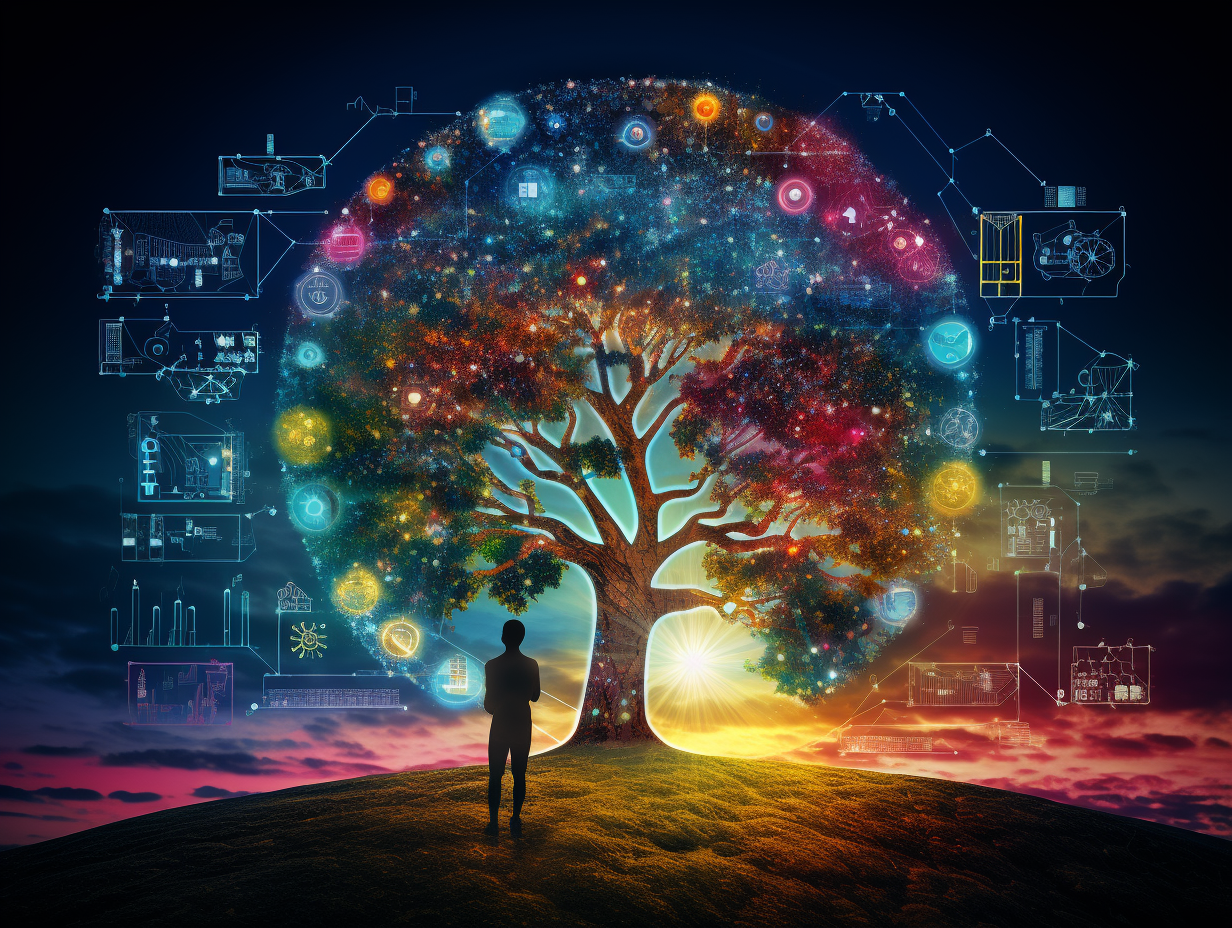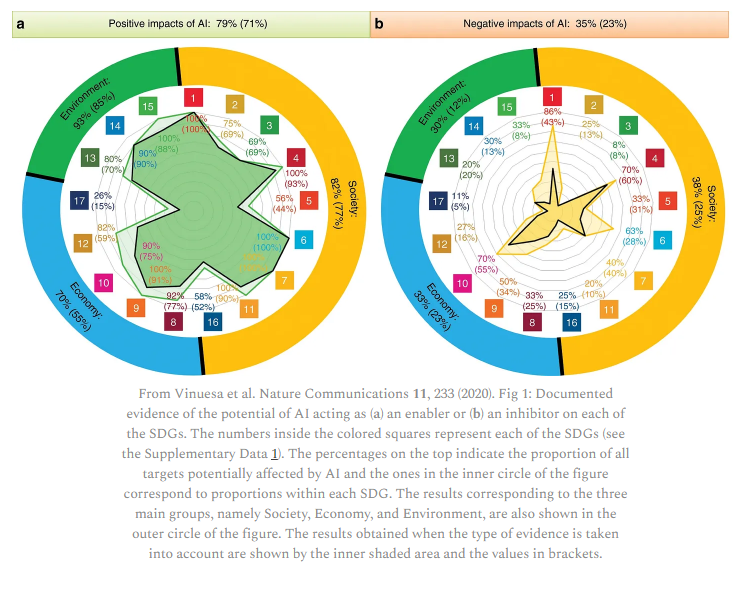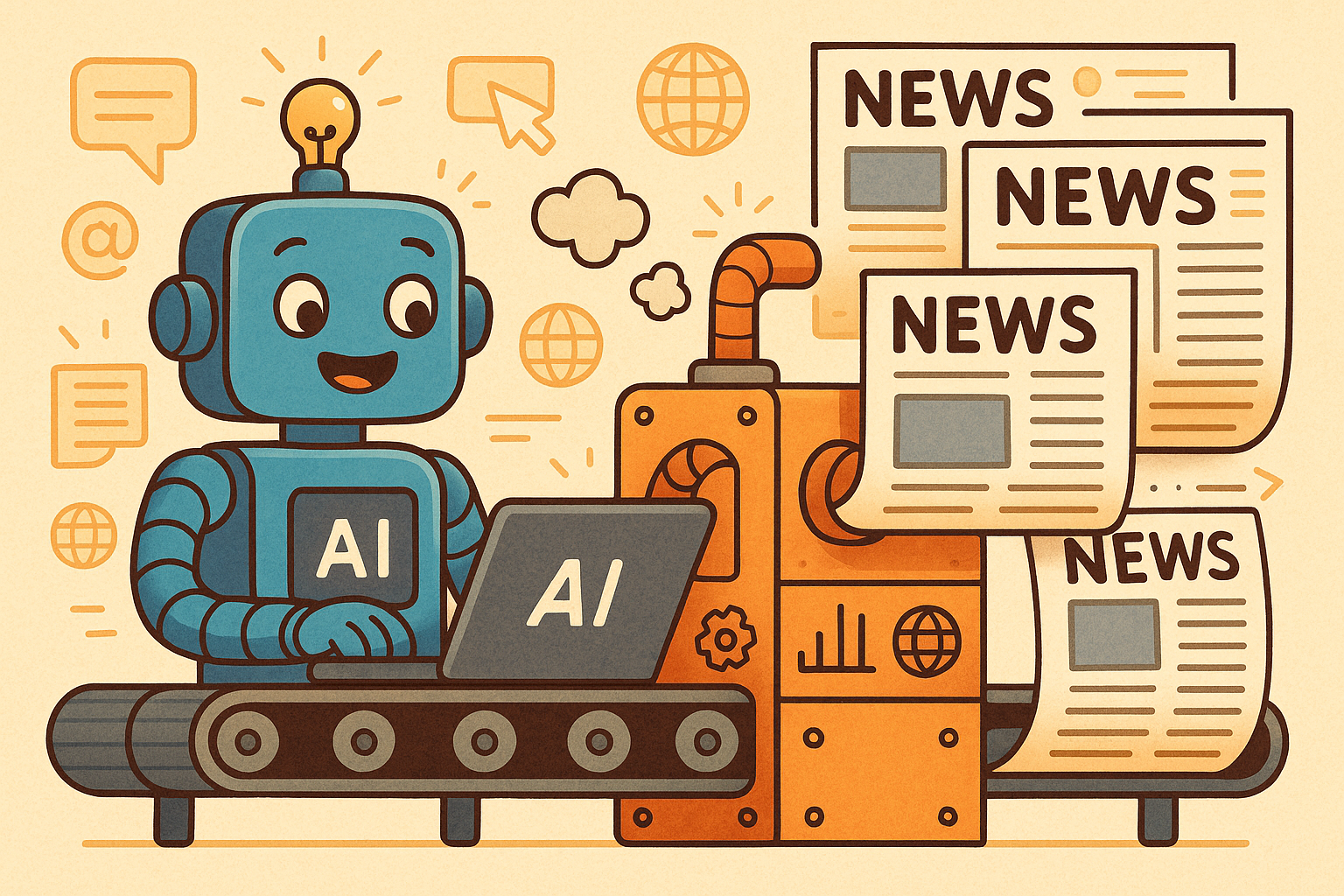Professor i nationalekonomi; forskar om regional utveckling, städer och kreativitet, gillar städer i alla former.
It's time to get serious about artificial intelligence and the UN Sustainable Development Goals
Gästblogg av José Lobo, tidigare publicerad på The Future of Being Human Länk till annan webbplats, öppnas i nytt fönster.
Jose Lobo och jag har samarbetat i många år. Han är verksam vid Arizona State University vid School of Sustainability. Hans forskning täcker många områden och han har lagt stor vikt vid att föra en global diskussion om frågor kring jämlikhet, hållbarhet, klimatförändringar och regional utveckling. Här är hans gästblogg om hur AI kan kopplas ihop med FNs hållbarhetsmål.

Picture: Midjourney. An AI interpretation of the headline to this blog.
On Tuesday 12 September, the United Nations Global Sustainable Development Report 2023 Länk till annan webbplats, öppnas i nytt fönster. formally released. Coming just days ahead of this year’s UN Sustainable Development Goals Summit Länk till annan webbplats, öppnas i nytt fönster., the report marks the half way point toward the 2030 target of achieving the SDGs, and is framed as an “invitation to embrace transformations with the urgency needed to accelerate progress” toward them.
Both this report, and an earlier one prepared by the office of the UN’s Secretary General on progress towards the sustainable development goals Länk till annan webbplats, öppnas i nytt fönster., underscore the role of technological developments in furthering or hindering progress. And in both reports, one technology is singled out as having especial relevance to the sustainable development agenda: Artificial Intelligence.
The complex intersection between AI and the SDGs
AI is a highly complex multi-edged sword when it comes to the SDGs, and at this point it’s by no means clear how it might help or hold back progress toward the goals. Underlining this, there have been reports over the past few days on the excessive water use associated with data centers Länk till annan webbplats, öppnas i nytt fönster. used for training generative AI systems like ChatGPT. And a recent paper posted on arXiv Länk till annan webbplats, öppnas i nytt fönster. by Pengfei Li and colleagues infers that “ChatGPT needs to ‘drink’ a 500ml bottle of water for a simple conversation of roughly 20-50 questions and answers, depending on when and where ChatGPT is deployed.”
Beyond water usage, data centers consume substantial amounts of energy, and this is only likely to accelerate as the race to embrace generative AI continues — a challenge that was highlighted in the recent World Economic Forum Top Ten Emerging Technologies of 2023 Länk till annan webbplats, öppnas i nytt fönster..
These and other challenges Länk till annan webbplats, öppnas i nytt fönster. — including bias, access, and potential exacerbation of social inequity — reflect the complexity of the landscape around AI and the SDGs. This was captured effectively in a 2020 paper in the journal Nature Communications Länk till annan webbplats, öppnas i nytt fönster..
The paper by Ricardo Vinuesa, Francesco Fuso Nerini, and colleagues, focused on the potential impacts of artificial intelligence on achieving the Sustainable Development Goals and concluded that, at the time, there was almost a 2:1 ratio of positive to negative impacts across the seventeen SDGs. However, this landscape of potential impacts was complex, as can be seen from the figure below:

Vinuesa and colleagues concluded that, while this landscape is complex, there are clear potential benefits in using AI based technologies to make progress toward the SDGs. However, this was before the widespread development and adoption of technologies such as the large language models that underpin platforms like ChatGPT.
How these emerging capabilities will transform the landscape around the SDGs is, as yet, unclear. Yet there is a growing urgency for clarity — not least because not making AI a central focus of discussions around the SDGs increases the chances of unintended consequences that substantially undermine progress toward the goals.
Considering the impact of AI on achieving the SDGs needs to be part of a wider global conversation on the effects of what is poised to be, hype aside, a transformative technology. Just looking at the potential impacts on labor for example — which cuts across a number of the SDGs — AI has the potential to reshape skill demands, career opportunities, and the distribution of workers among industries. And it represents a technology transition that is going to impact occupations in both advanced economies and in the Global South.
While AI and automation more broadly can augment the productivity of some workers, they also replace the work done by others, and will likely transform almost all occupations at least to some degree. At the same time, rising automation is happening during a period of growing economic inequality, raising fears of mass technological unemployment and a renewed need for policy efforts to address the consequences of technological change Länk till annan webbplats, öppnas i nytt fönster..
Switching to energy — another domain that cuts across many of the SDGs — discussions around the impacts of AI on sustainable development, energy transitions, and decarbonization, tend to occur along a continuum of how advancing automation and increased computational power can accelerate progress to achieving the SDGs. For instance these technologies have the capacity to make “smart grids” smarter, to support the integration of renewable sources into energy infrastructure, to help increase energy efficiency, to enable the development and integration of electrical autonomous vehicles, to support the development and use of smart appliances, and much more. Here, AI can potentially be positively transformative, as Vinuesa and colleagues point out in the Nature Communications paper above.
And yet there are also dangers of using AI here that include accelerating energy and resource use, and changes in individual, social, and economic behaviors that threaten potential gains.
The reality is that AI is a deeply transformative technology that is already having an impact (negative as well as positive) on the SDGs and pathways toward building a sustainable, equitable and promise-filled future. It’s also likely to demonstrate accelerating impact over the next few years, to the extent that to treat it as a minor perturbation to what is considered the important business of building sustainable futures would be a serious mistake.
In contrast, by embracing the intersection between AI and the SDGs, positively transformative possibilities begin to open up.
Using AI to augment SDG problem solving
To illustrate this, it’s worth invoking a very common framing for the process of invention, and that is invention as a process of searching for new ideas in a space of combinatorial possibilities. Here, there is a clear distinction between invention (which can be understood as the discovery of novelty) and innovation (which is the application, adoption, and diffusion of inventions through society).
Scientific discoveries and technological change often proceed from combining existing ideas and capabilities in novel ways in a process of combinatorial expansion — in other words, a process of expanding the space of possibilities. At a very basic level, an economy grows whenever people take resources and rearrange them in ways that makes them more valuable. In this way, in the words of Paul Romer Länk till annan webbplats, öppnas i nytt fönster., “growth arises from ideas about objects”.
Exploring a space of combinatorial possibilities while searching for new solutions to existing problems is something humans are pretty good at. But we have our limits — especially when faced with highly complex challenges. However, this is precisely what generative AI is positioned to do extremely well.
Imagine the possibility of analyzing large-scale interconnected databases to find patterns otherwise not "visible" to the human brain. Or finding patterns in the vast quantities of data now generated (and recorded) that are associated with human actions. Or (virtually) trying out combinations of chemicals, components, materials, processes, all while assessing their properties, to come up with new solutions to challenges. These and similar opportunities are not simply examples of automation, but an augmentation of the very process by which humans find solutions to problems and achieve future goals. This is one reason why we talk about “augmented intelligence” as being part of AI.
And this brings us back to the SDGs. The SDGs are goals that need to be met if the future is to become more equitable and sustainable than it might otherwise be. Achieving them will require finding solutions that lie within a “problem-solution space” that is fiendishly complex to navigate and — as we are currently seeing — often defies our collective human ingenuity. Yet formulating problems explicitly as instances of searches through combinatorial possibilities could allow us to tap the power of AI when it comes to sustainable development.
Could LLMs combined with open geographic databases empower residents of informal settlements to develop local urban planning approaches for making "slums" climate-change resilient for instance? Or might generative AI combined with human ingenuity reveal novel social, technical and political approaches to providing billions of people to clean water and basic sanitation? And could AI-human partnerships lead to breakthroughs in novel approaches to decarbonization?
Despite the possible downsides of AI, the combinatorial space it potentially opens up when used creatively is vast, and could pave the way to inventions and innovations that provide much-needed progress toward achieving the SDGs by 2030.
Aligned with this, SDG 17 explicitly calls for collaborations between the scientific community, the private sector, civil society, and policy-makers Länk till annan webbplats, öppnas i nytt fönster., to enhance, share and deploy scientific and technological knowledge which can enable the implementation of the sustainable development goals. Given the potentially transformative nature of the technology, this would seem to support a clear and urgent mandate for a global and multi-stakeholder discussion on how to use AI in accelerating sustainable development.
For all the potential negative impacts of AI on the SDGs, leveraging AI to create a more sustainable future could be transformative. But this will only happen if organizations such as the UN and others center artificial intelligence as a critical part of achieving the SDGs and beyond.
Hopefully this will be the case as delegates meet next week in New York at the SDG Summit and the myriad satellite meetings that accompany it. Because not to recognize and take seriously the potential — and the potential peril — of AI at this point, would place achieving the SDGs by 2030 in graver jeopardy than they already are.
José Lobo is on the faculty of the School of Sustainability, College of Global Futures, Arizona State University. His research focuses on determinants of urban socioeconomic development and how urbanization contributes to economic growth. He is keen on collaborating with communities of the urban poor to help bring their insights into building resilient communities to the global discussion on how to enable equitable, sustainable and climate change resilient urban development.
Detta är en bloggtext. Det är skribenten som står för åsikterna som förs fram i texten, inte Jönköping University.





